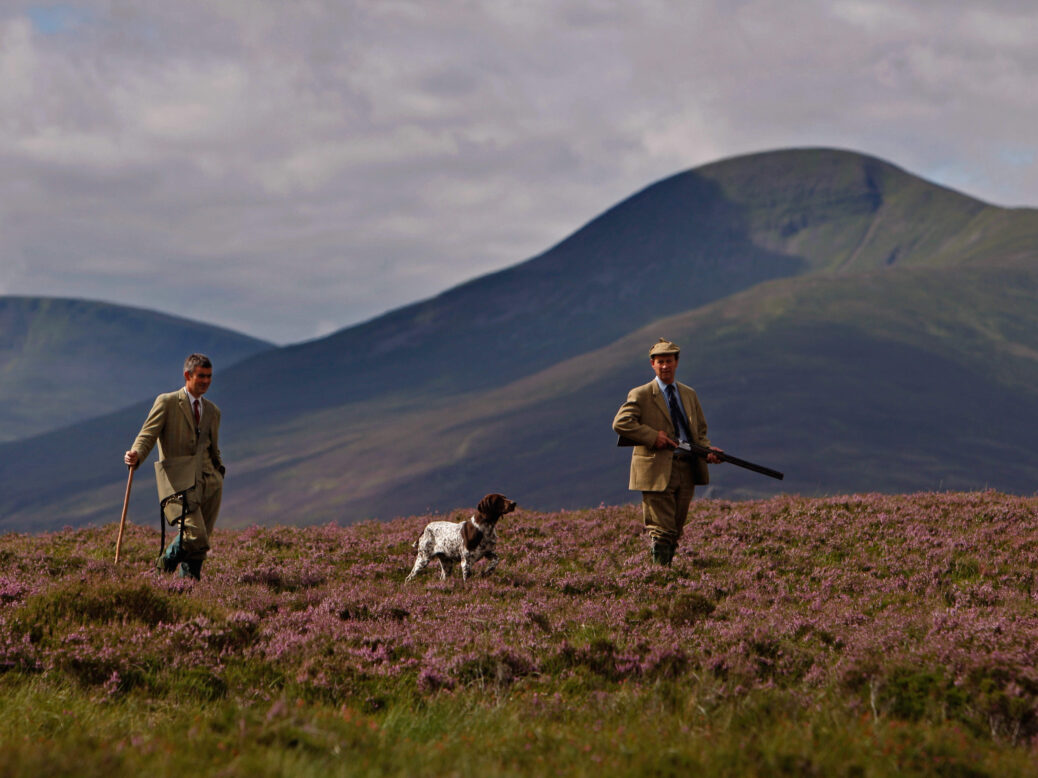
Scottish aristocrats are fiercely opposed to independence, but if the ‘yes’ vote gets its way, will they really abandon their ancestral mountains and ancient customs? Sophia Money-Coutts goes beyond the wall to find out.
The landed gentry of Scotland are furious about the referendum, apparently, and Tatler‘s on the case. After all, half of Scottish private land is split between a mere 432 estates, and the possibility of a Scottish republic spells trouble for the inheritances of the lords and ladies who represent the last relics of feudalism. And what better publication than Tatler, the village paper of the double-barrelled surname set, to give them the soapbox they need to air their views?
(This mole must be honest here – we believed this to be a satirical piece at first because of the byline, but it turns out Sophia Money-Coutts is both real and the magazine’s features editor. She is the daughter of Crispin Money-Coutts – the 9th Baron of Latymer – and the sister of magician Drummond Money-Coutts, whose Wikipedia page is suspiciously long. The Coutts in the Money-Coutts name is, indeed, the Coutts of the bank of the same name.)
Here are the five most remarkable things about the Scottish gentry, as revealed by Tatler:
1. There is a polo beyond horse polo
If you’re Old Scotland, then you probably live in a castle with a ghost (‘We actually have five ghosts,’ says Eleanor, the Duchess of Argyll, who lives with her husband Torquhil, Scotland’s elephant-polo champion, at Inveraray Castle in West Scotland).
Elephant polo: for when your polo game doesn’t have enough of a colonialist aesthetic.
2. Owning massive houses with ridiculous features is perfectly normal
In the Borders, Adrian, Lord Palmer, is also trying to keep his estate going. He doesn’t have a castle. But he does have a whopping Edwardian house called Manderston with 109 rooms. It has been used as a film set in lieu of Buckingham Palace and has a solid silver staircase – the only one in the world.
Travel even further west and you will find the Earl of Glasgow, clan chief of the Boyles and a Liberal Democrat peer whose seat is a colourful 13th-century castle called Kelburn. This attracted worldwide attention in 2007 after he invited four Brazilian graffiti artists to use a large cherry-picker and spray the castle walls with a psychedelic mural. Amid rolling Scottish hills, it looks properly mental, but Lord Glasgow, 74, is devoted. ‘I was a bit apprehensive I suppose, but now I think it’s rather lovely,’ he says.
Imagine how jealous Lord Palmer is of the guy who owns the world’s only solid gold staircase. It must eat him up inside.
3. There is class snobbery within class snobbery
There is a big difference between Balmoral and Birkhall,” says another who’s in the know. “Balmoral is incredibly uncomfortable and hideous, with retro electric heaters and a bagpiper who plays in the garden at nine every morning. And you’ll find all the old-school sorts invited there, like the Earl and Countess of Airlie and Lady Butter, and all they talk about is the Highland Games.”
That’s somebody being snobby about the Queen’s house, just to make that clear. Is there a word for class snobbery eating itself? Snobception?
4. There is a dynasty known as “of That Ilk”
Their 22-year-old daughter Iona runs with a grand young set that includes Ossian Moncreiffe, 23, the flame-haired son of Peregrine (whose full title is Peregrine Moncreiffe of That Ilk and who often appears at casual dinner parties in a kilt).
Not only do the of That Ilks exist, but they go back at least 800 years.
5. Mohammed Al Fayed has a massive pink castle, and he doesn’t care that the Old Money elite will never accept him into their ranks, because he loves his pink castle
And Mohamed Al Fayed can occasionally be found at his pink castle, Balnagown, 30 miles north of Inverness.
Al Fayed bought the estate in 1972 because of the links he says exist between ancient Egypt and Scotland. Legend has it that Princess Scota, the daughter of a pharaoh, fled Egypt around 1300BC and conquered what later became called Scotland in her honour. ‘She told all her soldiers, “Please, go and make love with all the women and increase the Egyptians here.” This is what happened!’ Al Fayed insists.
There’s something quite cute about this, really.
6. Membership of the anti-independence Scottish aristocrat club is dependent on your ancestors having fought against the English
Daily Mail editor Paul Dacre owns 18,000 acres near Ullapool, and one of Scotland’s richest women, the Stagecoach boss Ann Gloag, owns a castle, Kinfauns, and a hefty chunk of land not far from the Gibbses. ‘But did their ancestors fight at Bannockburn?’ thunders an Old Scot. Arrivistes, then. And it illustrates neatly what Old Scotland, by and large, thinks of New. Mohamed Al-Fayed may have had a kilt made for him, but chances are you won’t find him invited to a reel.
We wonder whether the descendants of those Scots who fought on the side of the English 700 years ago try to keep that side of the family quiet.
Read the full piece here, if you really want to.






